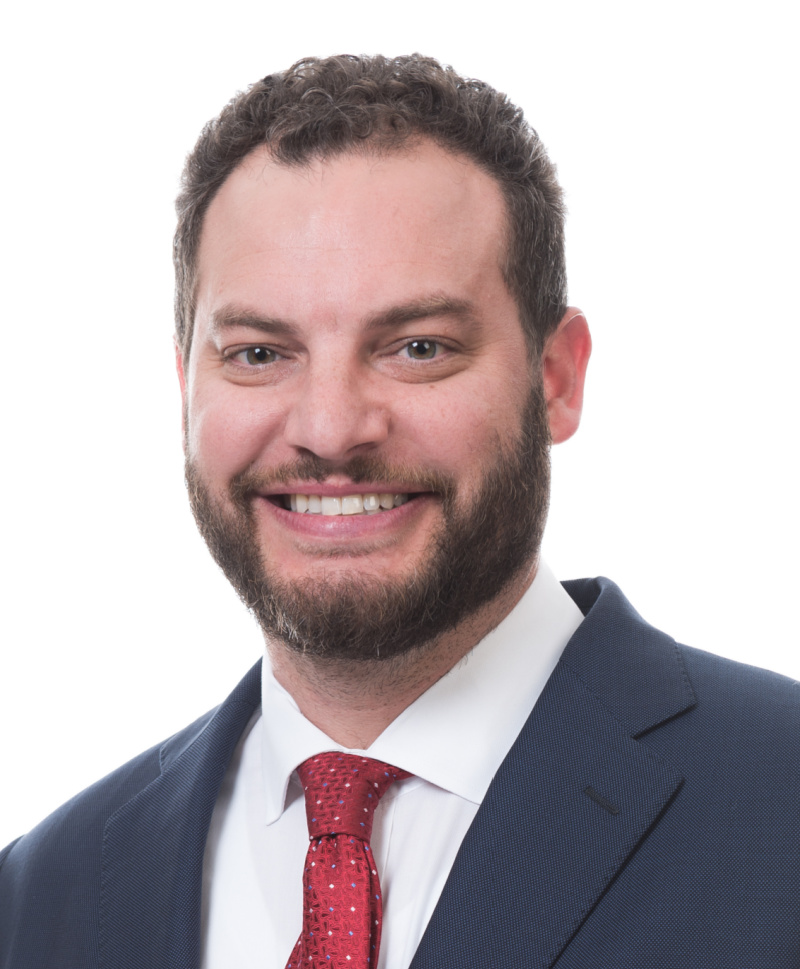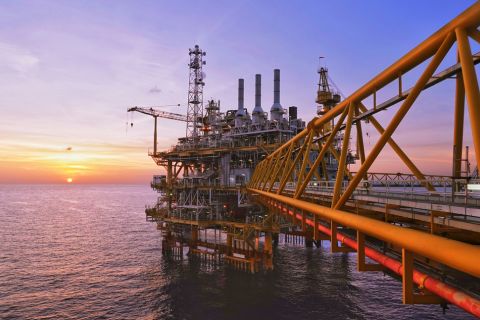[Editor's note: This video was recorded in early October. An edited version of the video transcript appears in the November 2020 issue of Oil and Gas Investor magazine. Subscribe to the magazine here.]
Entering the final quarter of a lean year, veteran dealmakers in the oil and gas industry are likely ready to see 2020 dead and buried. Though hyperbole is rampant in the industry, the shale generation has never seen a downturn so deep, a market so confused or the descriptor “unprecedented” so overused but correct.
For buyers, downturns have typically been windows of opportunity, ephemeral periods ripe for potential acquisitions for lower than normal prices. Not this time. Investors’ pressure on returns have tamped down deal activity even before the pandemic. Coupled with a tight capital market, the start of the ’20s has been abysmal for A&D activity and values.
Despite this, gas deals have shown relative strength this year, which Enverus attributed to more optimism around that particular commodity versus oil. Additionally, a rash of upstream mergers helped bolster total transaction value from June to September, though money and assets changed hands at historic lows.
In third-quarter 2020, Enverus counted 28 upstream deals in the U.S., tying it with the first quarter as the worst showing in a decade. Meanwhile, the second-quarter deal total was only the third lowest transaction haul in a quarter since 2009.
Ever optimistic, Derek Detring, president of Detring Energy Advisors, Chris Atherton, CEO and president of EnergyNet, and Dan Kohl, head of A&D advisory at UBS Investment Bank, joined Oil and Gas Investor via Zoom in early October for an in-depth discussion on the current state of the oil and gas transaction marketplace, as well as what they see for the year ahead.
Investor: Starting off looking at this year so far—what type of A&D opportunities, if any, are you seeing develop in the current state of the market?

—Chris Atherton, EnergyNet
Atherton: It’s been a very challenging year for the oil and gas industry, as well as the mergers, acquisitions and divestment sector of the industry. The A&D opportunities that EnergyNet, our firm, is seeing that seem to have the most buyer appetite and buyer interest are PDP [proved developed producing] heavy deals. These may be legacy conventional assets previously owned by majors or super independents. We’re also seeing interest in gas deals and oil deals that are more mature in their life of the unconventional plays and fields.
There seems to be a large segment of the buyer universe that is looking to acquire deals that generate steady cash flow that don’t have huge drilling obligations and commitments in this price environment. And they really want to put money to work because they see this as an opportunity with the low prices. They want to look back in five years, 10 years, and say I was acquiring assets in 2020. It would be like I was acquiring assets in 1986 from their perspective. So, there’s a lot of opportunistic pressure, I believe, to get deals done.
But in the big scheme of things, there’s not a lot of deals on the market right now or the sellers seem to be, in EnergyNet’s view, sometimes reluctant to go to market because they’re not sure if they want to see the results of the valuations of the sales and they were forced to make a decision to sell the asset for that price. There’s tremendous competition for some of these proved developed producing heavy assets and royalty and mineral type deals. But I think sellers are somewhat reluctant to go to market at this time unless they have to because there may be a situation where they are simply selling a deal to take the money and pay back their lender or they may be in more distress where it doesn’t necessarily make sense to run a divestment pro- cess at this time.
Detring: Particularly what Chris is saying on the more conventional side of things and mineral/royalties, we’re seeing that still drive the market. That really started to drive market activity at, say, late 2018 and really all of last year, as well.
As Wall Street and a lot of capital providers pulled back from the sector, that made public companies more hesitant to acquire, and they were typically the group that paid the most, with the lowest cost of capital, which made great exit opportunities for private and private-equity players. As that capital retreated in the latter part of 2018, 2019 was really driven by assets that public companies traditionally had shifted away from like conventional as- sets, and we saw minerals and royalties activity start to come up quite a bit.
We’ve seen a continuation of that trend this year with a quarter or two gap there where sellers were really trying to figure out which way was up after COVID-19 and OPEC+ hit the supply and demand. When we take this conventional assets or minerals/royalties to market, we are seeing probably about 25% or maybe even a third more participants in the VDR [virtual data room] this year than we would have expected last year. Now, that’s primarily due to a lack of asset supply on the market.
So, we are seeing good buyer participation. The buyers haven’t really retreated too much. To us it’s more the sellers not wanting to sell in today’s market. And with oil staying down in the $40s and gas having a bit of a run here lately, we are seeing more life in the natural gas side as well.
And I definitely agree with Chris, we’re also seeing at Detring that it is tough to get paid beyond PDP value outside of mineral and royalty assets in this environment. Even nonop working interest deals, for example, are almost more of a capital avoidance type play now and not necessarily trying to maximize value per acreage.
Callon just announced their nonop sale and at less than five times cash flow, which implies it’s almost a PDP level valuation for great Permian and Eagle Ford acreage. Again, Wall Street wants these public companies to stay within their cash flow. These nonop assets that Callon or any public company have can be $20 million in nonop AFEs in 2021 or it could be $120 million. You just don’t really know. So, I think that’s steered some of those groups away from nonop as well.
Investor: The Permian Basin has largely been a driver of activity. However, in the Permian, we’ve seen per-acre valuation for acreage fall sharply in the past 12 months. What’s changed in terms of well density and inventory to lower the price of Permian deals? Also, now that the “Permania,” as it was once called, is over, should investors conclude that companies overpaid?
Detring: In the Permian, in particular, I wouldn’t necessarily say that companies overpaid. They were just paying for assets in an environment where they were able to live outside of cash flow and fund that development outside of cash flow with debt and the equity capital markets. It was just a higher price environment. That supported the $30,000, $40,000 and more per acre that we were seeing being paid beyond PDP in 2018 and earlier.
So, I wouldn’t say anybody overpaid. They were making prudent decisions for the capital markets environment and the pricing environment at that time.
But right now, it is tough even if you’ve got a core package to find a buyer who’s going to pay beyond PDP for working interest deals in the Permian and elsewhere. Royalty or mineral deals are still continuing to transact and receive value beyond PDP from the buyer universe. And I’d also add that the larger the package, I’d say that’s really where it’s tough to find a big buyer universe in that winning group who will pay to meet the bid-ask spread.
We play the middle market at Detring. We are seeing more groups come out, and they’re still being competitive and aggressive. But the large universe—again, that typically was acquired by public companies—those groups are still tread- ing water right now, and it’s tough to find a buyer who will pay for acreage in a large package.
Kohl: The challenge buyers are experiencing across all basins, but specifically the Permian Basin, is the ability to finance deals significantly beyond PDP valuations. We have all seen the equity markets for oil and gas face headwinds and lending banks are focusing on only financing the producing barrels. The combination of the two, coupled with market perception, makes it difficult for buyers’ valuation to significantly exceed PDP.
Atherton: During 2016 through 2018, publicly traded companies were encouraged by investors to become a pure-play Midland Basin player, pure-play Delaware Basin or other areas. And there was a scarcity principle in play that caused them to say, ‘if I don’t buy this acreage or pay this price, then I may miss the boat on what my investors are asking me to do.’ So, there were very high multiples paid, but it was at a higher commodity price.
Assumptions made by public and private companies in terms of well density and EURs of those wells, that the parent-child relationship that each well would be the same and it would be a manufacturing process going forward, haven’t necessarily panned out according to plan in certain areas. There was certainly good rock, and a lot of these companies now own that good rock, but with these prices it’s difficult to make the investment case that was made at the time of the acquisition.
Investor: What do you see driving the recent jump in gas deals? Also, do you see the trend continuing into next year?
Kohl: Yes, I see gas-rich deals continuing to succeed into next year, with three significant factors contributing to the relative strength of gas-rich assets in the current market.
First, last year there was an overhang of low gas prices and reduced investment interest in the commodity, largely stemming from the associated gas thesis, stating that the volumes coming out of the Permian Basin were anticipated to swamp Lower 48 gas markets. Now, we have seen the Permian rig activity significantly drop, removing that overhang on gas prices. Naturally, the gas futures have risen.
Secondly, there’s an element of cyclicity. Specifically, we observed last year that gas as- sets were largely undervalued because A&D markets were focused on oil-rich deals, and now, in 2020 we are seeing these opportunities that were held back in 2019 start to transact because buyers are willing to get more bullish on valuations.

—Derek Detring, Detring Energy Advisors
Lastly, in our discussions with investors, we see a long-term movement toward investments that are considered transition fuels. For better or worse, ESG is becoming a major consideration in the oil and gas business, and gas is viewed as a cleaner, transition commodity. Additionally, it’s very challenging, if not impossible, to replace natural gas in the U.S. market, both for its use in power generation, specifically as a replacement for coal, but also as the primary fuel for building heating. While I fully believe the oil industry is not going away in my lifetime, decision makers are cognizant of this long-term overhang, coupled with pressure coming from LP investors to target cleaner technologies.
Investor: Overall, commodity prices this year have remained at levels that will break many small- and mid-sized companies carrying substantial leverage. Some have speculated that distress and consolidation will transform the industry into about 10 to 15 companies. What’s your view? Will the industry shrink that radically and do you think it needs to?
Atherton: I definitely don’t think it’s going to shrink to 10 to 15 companies and if it does, it’s going to take a considerable amount of time. I would say that the 2020 bankruptcies and Chapter 11s that are occurring, the pain is probably healthy for us. These companies were overlevered and, from an A&D standpoint or M&A standpoint, it really sidelined a lot of companies from participating either as a buyer or a seller because their debt load was too much for them to bear and to operate. So, as these companies restructure, equitize their debt and reemerge, I’m hopeful this time that they will reemerge with more capital discipline that will allow for a more healthy A&D market.
Consolidation is being asked for by the investor community. It’s difficult to accomplish. With, for example, Chevron buying Noble, I didn’t really see that coming. WPX and Devon, I didn’t see that coming. Those are two different deals, but it takes out two big parts of our large-cap, publicly traded E&P space.
I expect more mergers of equals to take place, but there is a social aspect to the WPX and Dev- on deal, the management team being interlaced. But there are not many companies that want to relinquish their jobs and their companies for the stock of another company. So, that makes it somewhat difficult to have this merger of equals and low premium, no premium deals to take place. It may accelerate, but it does take a meeting of the minds of the two companies.
Investor: On the subject of consolidation, M&A activity has been relatively quiet this year. Do you see Chevron’s acquisition of Noble Energy as a precursor for further consolidation executed by the supermajors? Or should we expect more “mergers of equals” similar to the Devon/ WPX deal?
Detring: We’ll see more of both. I agree with Chris that seeing just 10 public companies would be a scary situation that would hopefully take a long time. But some consolidation is good for the industry and healthy—where it makes sense, and for the larger groups that have the capital availability and the balance sheet capability do so. We’d like to see Chevron buying Noble where it really helps supplement and buttress their existing positions across some key basins, allowing for longer laterals and key synergies beyond just G&A management reductions.
Mergers of equals also make a lot of sense now for balance sheet reasons, but also when you look at how many rigs were running 12 months ago, now we’re down to much less than half of that amount. It takes a lot of people to run those rigs from the management team’s perspective with the geologists, engineers, all the technical teams that are required to do that. So, you just think about that from that perspective as well. Do we really need all this G&A out there for all those teams running a quarter—or whatever we’re down to now—of the rigs that we had 12 months ago?
That’s a big reason of it as well. It is unfortunate. We all have friends who have lost their jobs or some [who have] been at companies that had to restructure or file Chapter 11. It’s definitely the least fun time I’ve ever had in the industry, but likely it will continue. It definitely is painful for a lot of our personal friends and colleagues, but there is some health to it and rationale for it, and we definitely expect more of that to happen over the next several years.
Kohl: Consolidation is certainly merited in many cases, to capture synergies in addition to all the reasons Chris and Derek mentioned previously. That said, the United States has an incredibly diverse set of oil and gas assets and smashing everything together into 10 or 15 companies does not mean that you’re delivering more value to your equity shareholders. You’ve got assets located in different basins, states, regulatory regimes, offshore, onshore, deep water, waterflood, tertiary recovery, unconventional—there will always be a place for lean, more focused organizations that can deliver value to shareholders above and beyond simple G&A synergies. The industry will al-ways merit a diverse mix of private, small-, mid- and large-cap firms.
Investor: Deal values through the third quarter are less than $30 billion in the U.S. with more corporate deals than asset deals. While it feels like a bottoming out, where does this year rank in A&D activity and value? And when are you expecting a rebound in the A&D market?
Kohl: 2020 has been an extremely challenging year for A&D activity. However, I expect there’s a light at the end of the tunnel, quickly approaching in 2021. Various macro-economic factors will be driving the industry in a positive direction.
First, there is line of sight to a COVID-19 vaccine such that, at some period in 2021, we expect to see a significant demand increase as economies around the world open up.
Second, rig count is at an all-time low, and as Derek mentioned, this is going to continue to drive production decline across the United States. Both those points indicate future price increases. If this drives commodity futures into a steeper contango, we expect the sellers who were holding back for a perceived market bottom will market those packages, depleting the pent-up inventory that has built throughout 2020.
And third, today we have discussed industry consolidations, and generally when you have major M&A activity, there are significant noncore assets that need to be pruned from the pro-forma entity. I do see 2021 being a good, strong recovery year for deal flow, and I’m ready to jump into it.
Investor: Final thoughts on the industry’s path forward? How do companies maneuver through current challenges the industry is facing to successfully end up on the other side of the downturn? And how do you see A&D’s role in the recovery? Also, any emerging trends emerging for 2021?
Atherton: Right now is a difficult time for the industry and a low mark for the A&D market. I do think there are some bright spots. Again, the restructurings that are going on will create a more healthy industry. The survivors from this downturn will ultimately be stronger, and that’s not just going to be the E&P companies, but that’s going to be service companies and auxiliary players that facilitate and help the oil and gas industry do what it does. There will be more capital discipline going forward, but it is going to take some time to get energy investors and generalist investors back to the table and to re- ally be able to fund the industry going forward.
One of the things that we see in some the divestment processes we run is that there is a sentiment among the buyer community that there will be, as Dan mentioned, a volatile price going upward, and they want to take ad- vantage of that. I do think with the lack of investment, drilling rigs, the lack of things going on, that it’s going to snap, but there may be a lot of casualties along the way before it does snap back up.

—Dan Kohl, UBS Investment Bank
Detring: We’ve analyzed the past two crises at our firm, and it does seem to take between four and six quarters typically from the peak to fully recover. We’re definitely a few quarters into it now. I think there’s only about $4 billion of disclosed asset level deals this year through October 1. That’s absolutely horrible. So, it’s by no means an exaggeration to say that this is the worst market that a lot of us have been through.
I do see a light at the end of the tunnel. It is a real property market. It will come back. We have seen investors flee the sector and into tech—how long until tech has to live within cash flow? We see a tech company IPO, I think two of those a day, that loses money at $20 billion valuations. So, that may be one catalyst. Once investors start holding them accountable like our public companies are forced to live within cash flow, I could see some money flow back into the sector as well, and we could see public company acquisition activity again.
But it starts with the smaller deals, the more auction-type platforms and then it gets bigger and bigger. Eventually, the larger deals will come back in vogue as more large-cap acquirers are back in the market. And we are seeing the middle market gain momentum where our firm plays. It’s definitely picking up. We’ve gotten several attractive mandates engaged for this quarter and next quarter. We are starting to see more activity, so we have been encouraged over the past couple weeks.
Kohl: Much like Derek, we do see the fourth quarter and first quarter launching mandates picking up. I think we’re going to see a lot more deals on the market as far as the traditional, regular-way A&D.
But certainly, what A&D professionals can do to assist struggling companies is step outside of their typical reserve report, data room, broad auction process mechanics and seek unique solutions for clients. And that’s where a lot of our focus has been over the last six months, providing help to combat reduced debt capacities, finding alternative financing solutions outside of simple divestitures.
Most A&D professionals have spent significant time on the inside, managing oil and gas assets, and have a strong technical background that can help to provide unique insights to help solve some of the corporate finance challenges that we’re trying to overcome in the industry presently. There has been a lot of pain in 2020, but things are looking much better for 2021.
Recommended Reading
NAPE: Chevron’s Chris Powers Talks Traditional Oil, Gas Role in CCUS
2024-02-12 - Policy, innovation and partnership are among the areas needed to help grow the emerging CCUS sector, a Chevron executive said.
Deepwater Roundup 2024: Offshore Australasia, Surrounding Areas
2024-04-09 - Projects in Australia and Asia are progressing in part two of Hart Energy's 2024 Deepwater Roundup. Deepwater projects in Vietnam and Australia look to yield high reserves, while a project offshore Malaysia looks to will be developed by an solar panel powered FPSO.
E&P Highlights: March 4, 2024
2024-03-04 - Here’s a roundup of the latest E&P headlines, including a reserves update and new contract awards.
CNOOC Sets Increased 2024-2026 Production Targets
2024-01-25 - CNOOC Ltd. plans on $17.5B capex in 2024, with 63% of that dedicated to project development.
Deepwater Roundup 2024: Offshore Africa
2024-04-02 - Offshore Africa, new projects are progressing, with a number of high-reserve offshore developments being planned in countries not typically known for deepwater activity, such as Phase 2 of the Baleine project on the Ivory Coast.





